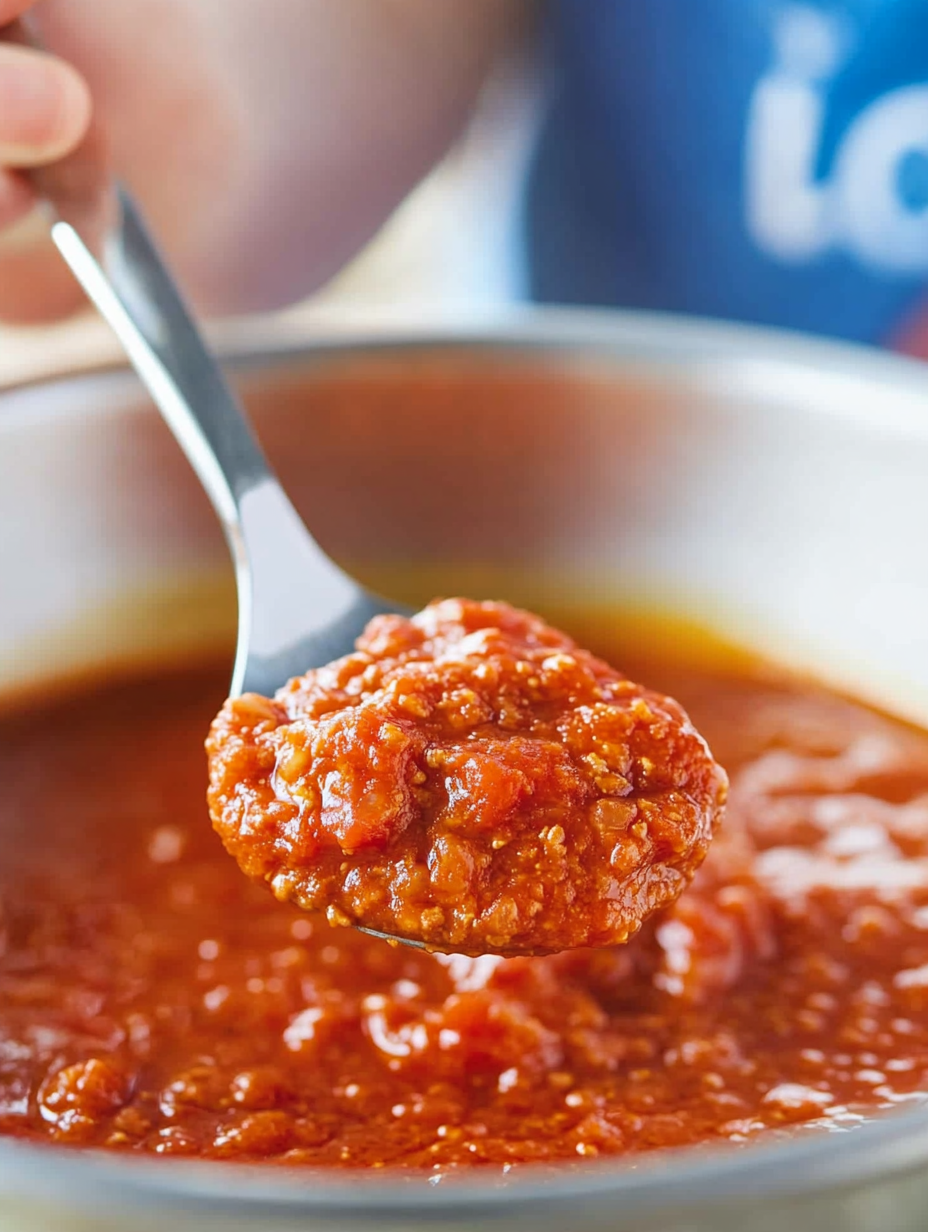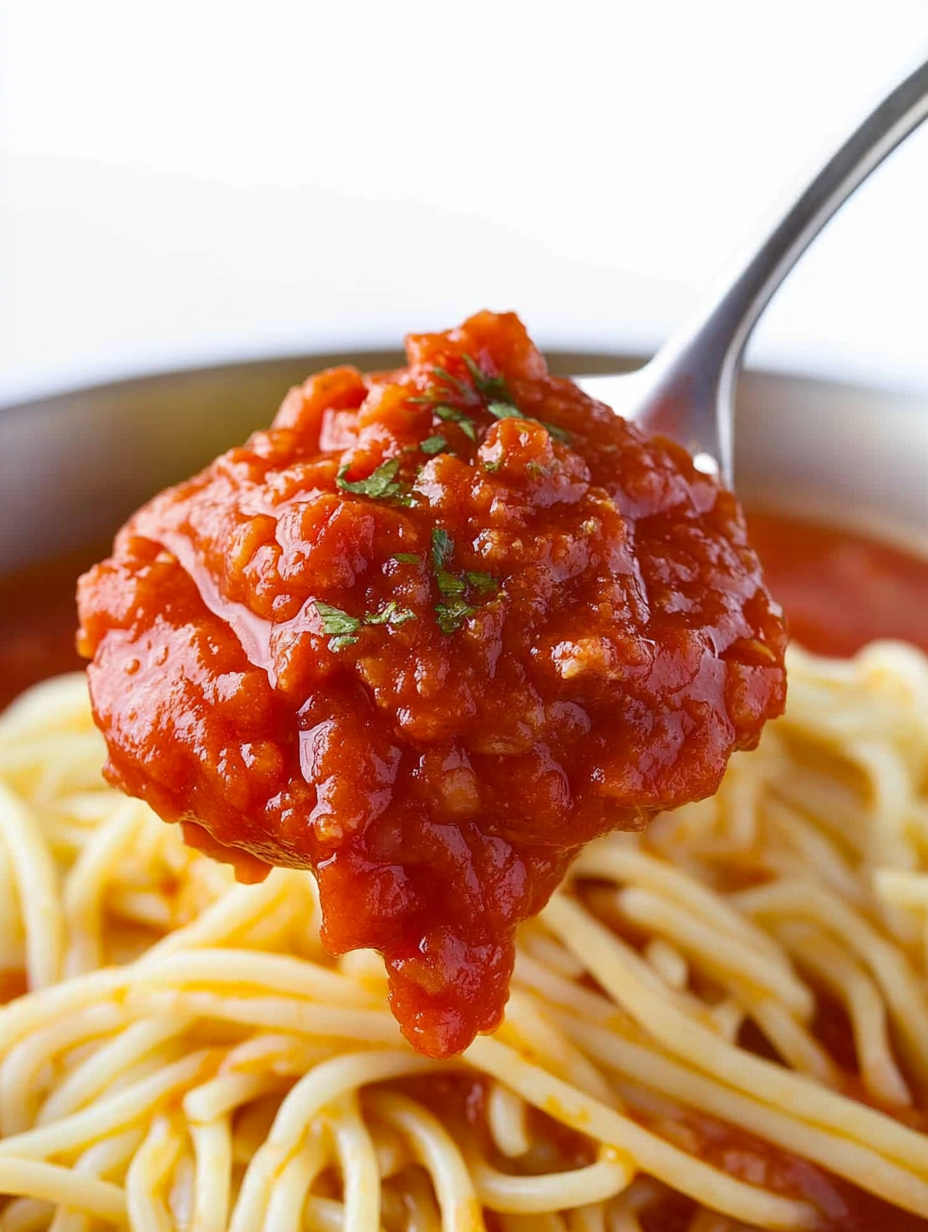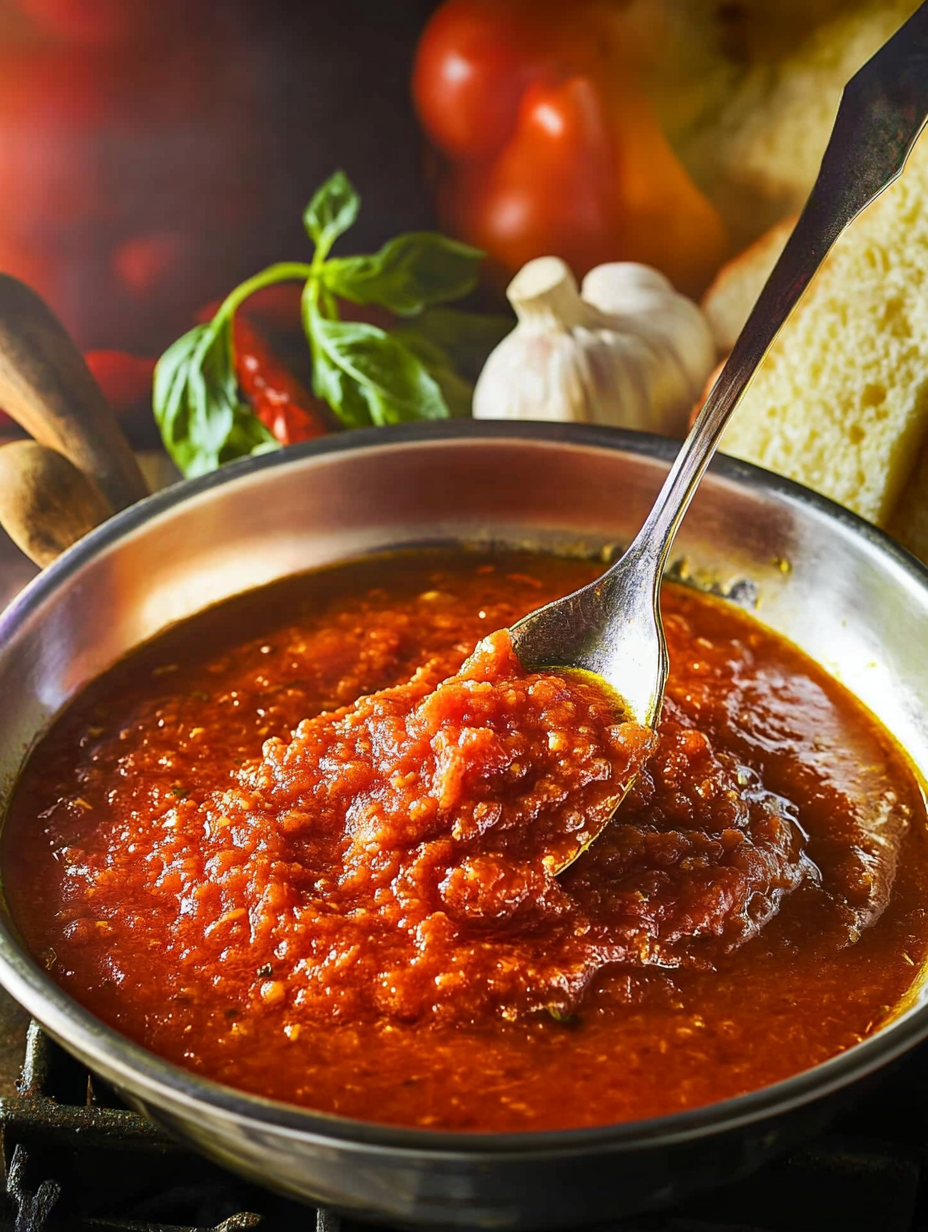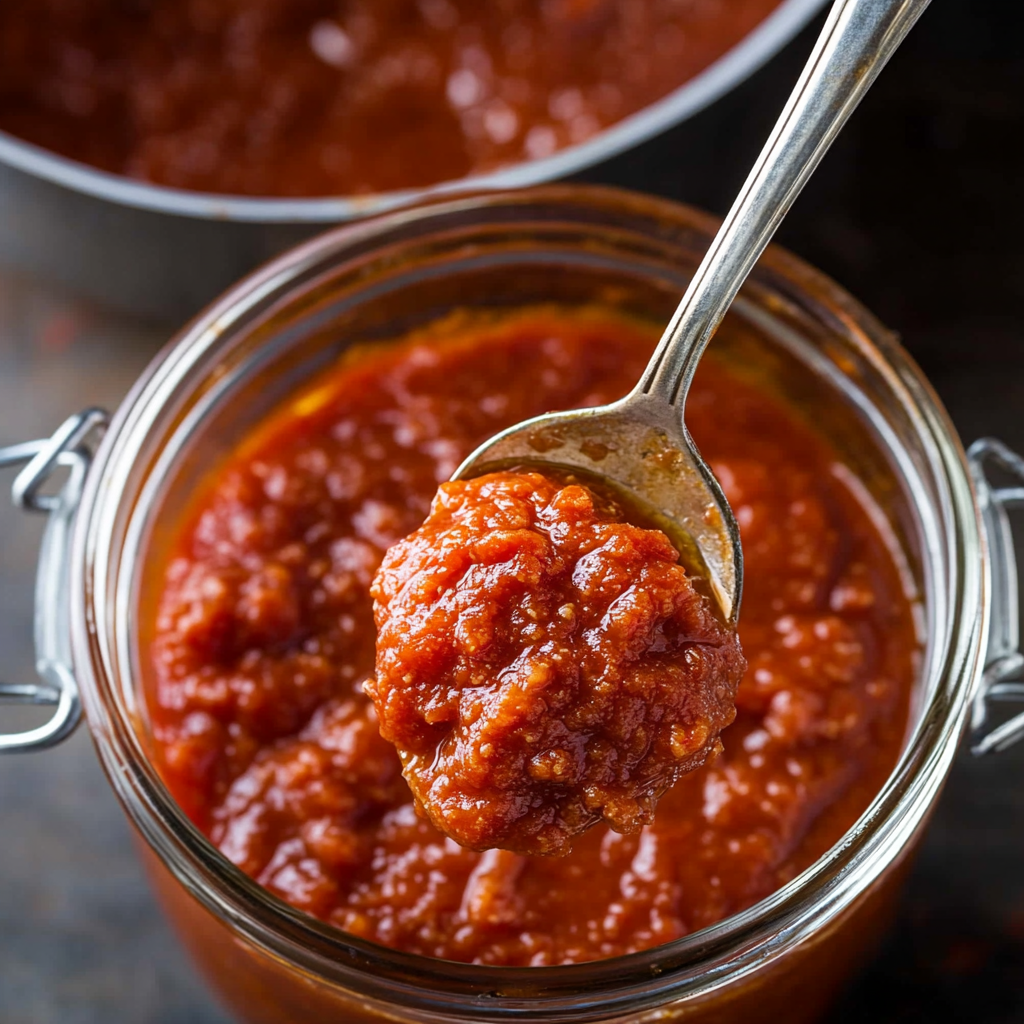Making homemade spaghetti sauce is more than cooking. It’s an art that turns simple ingredients into a flavor masterpiece. Whether you’re new to cooking or experienced, making the perfect homemade Italian spaghetti sauce can make your pasta dishes stand out.
To make a real spaghetti sauce, you need passion, fresh ingredients, and a bit of experimentation. The right mix of tomatoes, herbs, and cooking methods can make your sauce as good as the ones in Italian restaurants.
Key Takeaways
- Fresh ingredients are crucial for exceptional homemade spaghetti sauce
- Understanding cooking techniques dramatically improves sauce quality
- Experimenting with herbs and spices creates unique flavor profiles
- Patience is key when developing rich, deep sauce flavors
- Homemade sauce offers superior taste compared to store-bought alternatives
Essential Ingredients for Classic Italian Spaghetti Sauce
Making a homemade spaghetti sauce with fresh tomatoes needs the right ingredients. These ingredients turn a simple recipe into a masterpiece. The right mix can make your pasta sauce truly special.

Fresh vs. Canned Tomatoes: Making the Right Choice
Choosing between fresh and canned tomatoes is key. Summer tomatoes are at their best, full of flavor. They give your sauce a taste that canned tomatoes can’t match.
- Roma tomatoes work best for sauce consistency
- San Marzano tomatoes offer exceptional sweetness
- Plum tomatoes provide rich, meaty texture
Herbs and Spices That Enhance Flavor
Herbs are crucial for a great spaghetti sauce. Fresh basil, oregano, and thyme can make your sauce stand out. Dried herbs are good too, but fresh herbs add a unique aroma.
“The secret to great sauce lies in the quality of your herbs and the love you put into cooking.” – Italian Cooking Tradition
Base Vegetables for Rich Sauce Foundation
A good sauce starts with onions, carrots, and celery. These vegetables add a deep flavor. Cooking them slowly brings out their natural sweetness, enhancing your sauce.
- Finely chop onions for smooth texture
- Grate carrots to dissolve completely
- Dice celery for subtle crunch
Step-by-Step Guide to Making Homemade Spaghetti Sauce
Making homemade spaghetti sauce is easy. You just need the right ingredients and techniques. This way, you can make a sauce that’s as good as what you find in restaurants.

Here’s how to make a perfect spaghetti sauce recipe (no meat) that will wow your family and friends:
- Prepare Your Ingredients
- Gather fresh tomatoes or high-quality canned tomatoes
- Collect fresh herbs like basil and oregano
- Chop onions and garlic for flavor base
- Create the Flavor Foundation
- Sauté onions and garlic in olive oil until translucent
- Add tomatoes and crush them while cooking
- Season with salt, pepper, and herbs
- Simmer to Perfection
- Cook sauce on low heat for 45-60 minutes
- Stir occasionally to prevent burning
- Taste and adjust seasonings as needed
“The secret to a great homemade spaghetti sauce recipe is patience and fresh ingredients.” – Italian Cooking Tradition
Your homemade spaghetti sauce will get richer and deeper in flavor as it simmers. The trick is to let it cook for a while. This way, the flavors will mix well, making the sauce vibrant and comforting.
Pro tip: For a smoother texture, use an immersion blender to puree the sauce a bit. This will make it velvety and stick well to your pasta.
Secret Tips for Restaurant-Quality Pasta Sauce
Want to make your homemade pasta sauce amazing? Professional chefs have secrets to share. Now, you can make your sauce taste like it’s from a top restaurant, right in your kitchen.

Wine Selection and Cooking Techniques
Choosing the right wine can make a big difference. Red wines like Chianti or Cabernet Sauvignon add depth. Here are some cooking tips:
- Choose a wine you’d enjoy drinking
- Allow wine to simmer and reduce
- Add wine early in the cooking process
Balancing Acidity and Sweetness
Getting the right balance is key. Chefs suggest these tips:
- Use a pinch of sugar to balance acidity
- Add grated carrots for sweetness
- Roast tomatoes to bring out their sweetness
“The secret to an exceptional sauce is understanding flavor balance” – Chef Mario Batali
Achieving the Perfect Consistency
Patience is a key ingredient. Slow cooking blends flavors and thickens the sauce. Don’t rush it. Use low heat and stir now and then to avoid burning and get rich flavors.
Common Mistakes to Avoid When Making Spaghetti Sauce
Making the perfect homemade spaghetti sauce can be tricky. Many home cooks make simple errors that can change the flavor and quality of their sauce. Knowing these common mistakes will help you make a delicious easy homemade spaghetti sauce every time.
- Rushing the Cooking Process: A great homemade spaghetti sauce needs patience. Slow cooking lets flavors blend well.
- Oversalting: Salt can overpower the tomatoes and herbs quickly. Add salt slowly and taste as you go.
- Using Low-Quality Tomatoes: The best homemade spaghetti sauce starts with high-quality tomatoes. Choose ripe, fresh ingredients.
One big mistake home cooks make is not letting the sauce reduce enough. Authentic Italian sauces get deep flavor from slow simmering. If you rush it, you miss out on rich, complex flavors that make a basic sauce amazing.
“Good sauce is about passion, patience, and quality ingredients.” – Italian Cooking Tradition
Temperature control is key when making easy homemade spaghetti sauce. Too high heat can burn it, while too low heat stops flavor development. Keep a gentle simmer for the best taste and texture.
- Keep stirring to prevent sticking
- Use a heavy-bottomed pot for even heat distribution
- Taste and adjust seasonings throughout cooking
By avoiding these common mistakes, you’ll make your homemade spaghetti sauce truly remarkable.
Variations of Traditional Homemade Spaghetti Sauce
Creating a delicious homemade Italian spaghetti sauce doesn’t mean sticking to just one recipe. Exploring different variations can transform your pasta experience. It caters to diverse dietary preferences and taste buds.
Vegetarian and Vegan Sauce Options
A spaghetti sauce recipe no meat can be just as flavorful and satisfying. Consider these plant-based alternatives:
- Roasted vegetable base with eggplant and zucchini
- Mushroom-rich sauce for deep umami flavor
- Lentil and tomato sauce for protein boost
Regional Italian Flavor Profiles
Italian regions offer unique twists on traditional homemade spaghetti sauce. From the bright, herb-infused sauces of Sicily to the rich, slow-cooked versions of Tuscany, each area brings its own culinary magic.
Spicy and Herbal Alternatives
Elevate your sauce with exciting flavor combinations:
- Arrabbiata-style sauce with red pepper flakes
- Basilico sauce with fresh basil and garlic
- Mediterranean-inspired herb blend
“The beauty of homemade sauce is its endless potential for creativity.” – Italian Cooking Tradition
Experiment with these variations to discover your perfect homemade Italian spaghetti sauce. It should reflect your personal taste and culinary style.
Storing and Preserving Your Homemade Sauce
Making the perfect homemade spaghetti sauce is an art. But knowing how to store it is just as important. Your homemade tomato sauce can last for months with the right techniques.
Canning your homemade spaghetti sauce is a great way to keep it fresh. Here are the key steps to follow:
- Sterilize glass jars thoroughly before filling
- Leave proper headspace when filling containers
- Use a water bath canning method for safe preservation
- Check seals carefully after processing
Pro tip: Always use fresh, high-quality tomatoes for the best homemade tomato sauce preservation results.
“Proper storage is the secret to enjoying your homemade sauce for months to come!” – Culinary Experts
Freezing is another great way to preserve your homemade sauce. Here’s how to freeze it right:
- Cool the sauce completely before freezing
- Use freezer-safe containers or heavy-duty bags
- Leave room for expansion
- Label with date and contents
- Store in the freezer for up to 3-4 months
Remember, cooling and storing properly are key to keeping your sauce’s rich flavors. Whether you choose canning or freezing, your sauce will stay delicious for months.
Pairing Your Sauce with Different Pasta Types
Creating the perfect pasta dish is more than just a tasty homemade pasta sauce. The right pasta shape can make your spaghetti sauce from fresh tomatoes a standout dish. It will impress every taste bud.
Matching Pasta Shapes to Sauce Texture
Your homemade pasta sauce needs the perfect pasta partner. Different sauce textures pair best with specific pasta shapes:
- Thick, chunky sauces: Rigatoni, penne, and shells
- Smooth, light sauces: Linguine, spaghetti, and angel hair
- Meat-based sauces: Fusilli and rotini (their spirals trap sauce beautifully)
Serving Temperature and Plating Techniques
Temperature and presentation can change your pasta experience. Warm your serving plates before plating. This keeps the homemade pasta sauce at the perfect temperature. Add fresh basil or grated Parmesan for extra flavor and visual appeal.
“The right pasta and sauce combination is an art form that turns a simple meal into a culinary experience.” – Italian Cooking Masters
Pro Serving Tips
- Always serve sauce immediately after mixing with pasta
- Use pasta water to help sauce adhere to noodles
- Twirl or layer pasta for an attractive presentation
With these tips, your spaghetti sauce from fresh tomatoes will be a hit. It will create a memorable dining experience that celebrates authentic Italian cooking.
Conclusion
Making homemade spaghetti sauce is more than cooking. It’s an art that connects you to Italy’s culinary traditions. Your sauce is a personal expression of flavor, creativity, and passion.
Every time you make your sauce, you learn something new. It’s all about experimenting, trusting your taste, and knowing that practice makes perfect. The best sauce starts with quality ingredients.
Your kitchen is where tradition meets innovation. Whether you stick to classic recipes or try new things, remember to add love. Share your sauce with friends and family, and don’t be shy to add your own twist.
Begin your sauce-making journey today. With dedication and enthusiasm, you’ll turn simple ingredients into a memorable meal. It’s a celebration of homemade Italian flavors.
FAQ
How long can I store homemade spaghetti sauce?
You can keep your homemade spaghetti sauce in the fridge for 4-5 days. For longer storage, freeze it for 3-4 months. Always cool the sauce first and use freezer-safe containers.
Can I make spaghetti sauce with fresh tomatoes instead of canned?
Yes, you can! Fresh tomatoes make a delicious sauce. Use ripe Roma or San Marzano tomatoes. Remember to blanch, peel, and seed them first. Fresh tomatoes might need more cooking time to thicken.
What’s the secret to a less acidic tomato sauce?
To reduce acidity, add a pinch of baking soda while cooking. You can also use a grated carrot or a teaspoon of sugar. Cooking slowly with sweet tomatoes also helps.
How can I make a vegetarian spaghetti sauce?
Making a vegetarian sauce is easy. Use onions, garlic, and bell peppers for flavor. Add herbs like basil and thyme. Mushrooms or plant-based proteins can add texture.
What’s the best way to thicken homemade spaghetti sauce?
Thicken sauce by simmering it uncovered. This lets liquid evaporate. For quicker thickening, use tomato paste or a cornstarch slurry. Grated Parmesan cheese also thickens and adds flavor.
Can I can homemade spaghetti sauce for long-term storage?
Yes, but follow safe canning procedures. Use a pressure canner or add acid like lemon juice. Sterilize jars and process them correctly to avoid bacterial growth.
How do I prevent my sauce from being watery?
Remove tomato moisture by seeding and draining. Simmer the sauce uncovered to evaporate liquid. Use paste tomatoes and cook at a low temperature for a thick sauce.
What herbs work best in homemade spaghetti sauce?
Use fresh basil, oregano, thyme, and parsley for flavor. Dried herbs like Italian seasoning also work. Add fresh herbs near the end to keep their flavor bright. Dried herbs can be added earlier for deeper taste.

